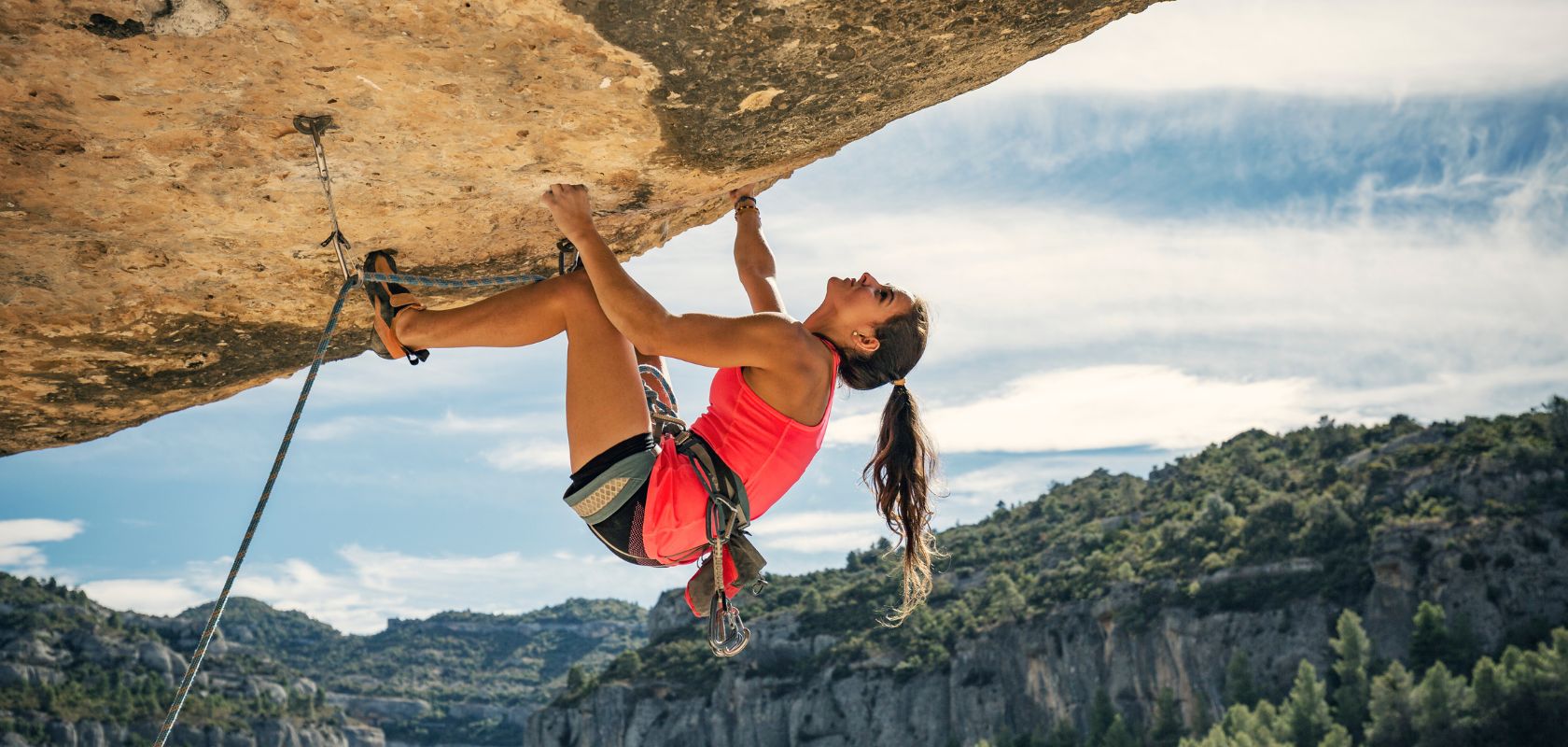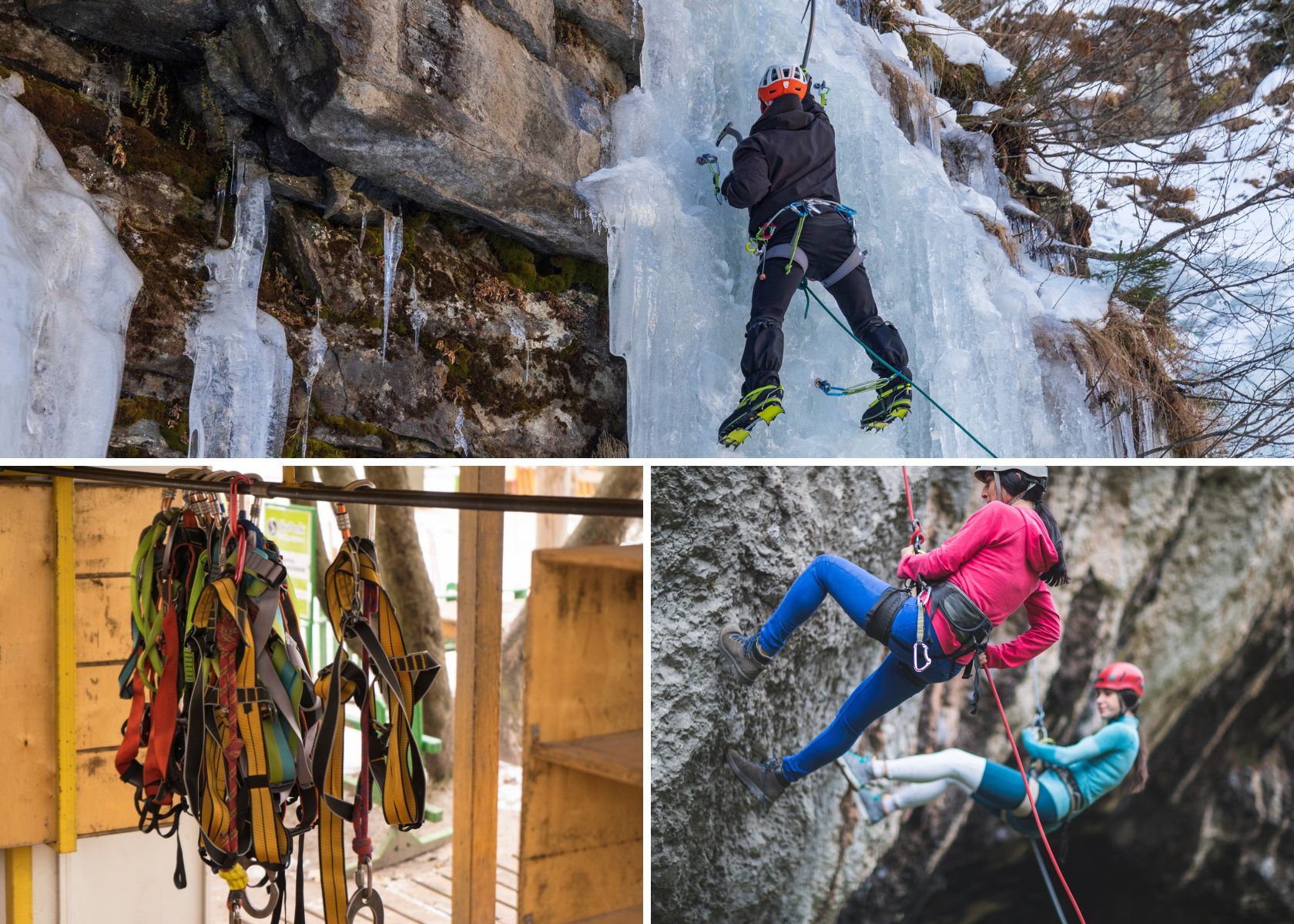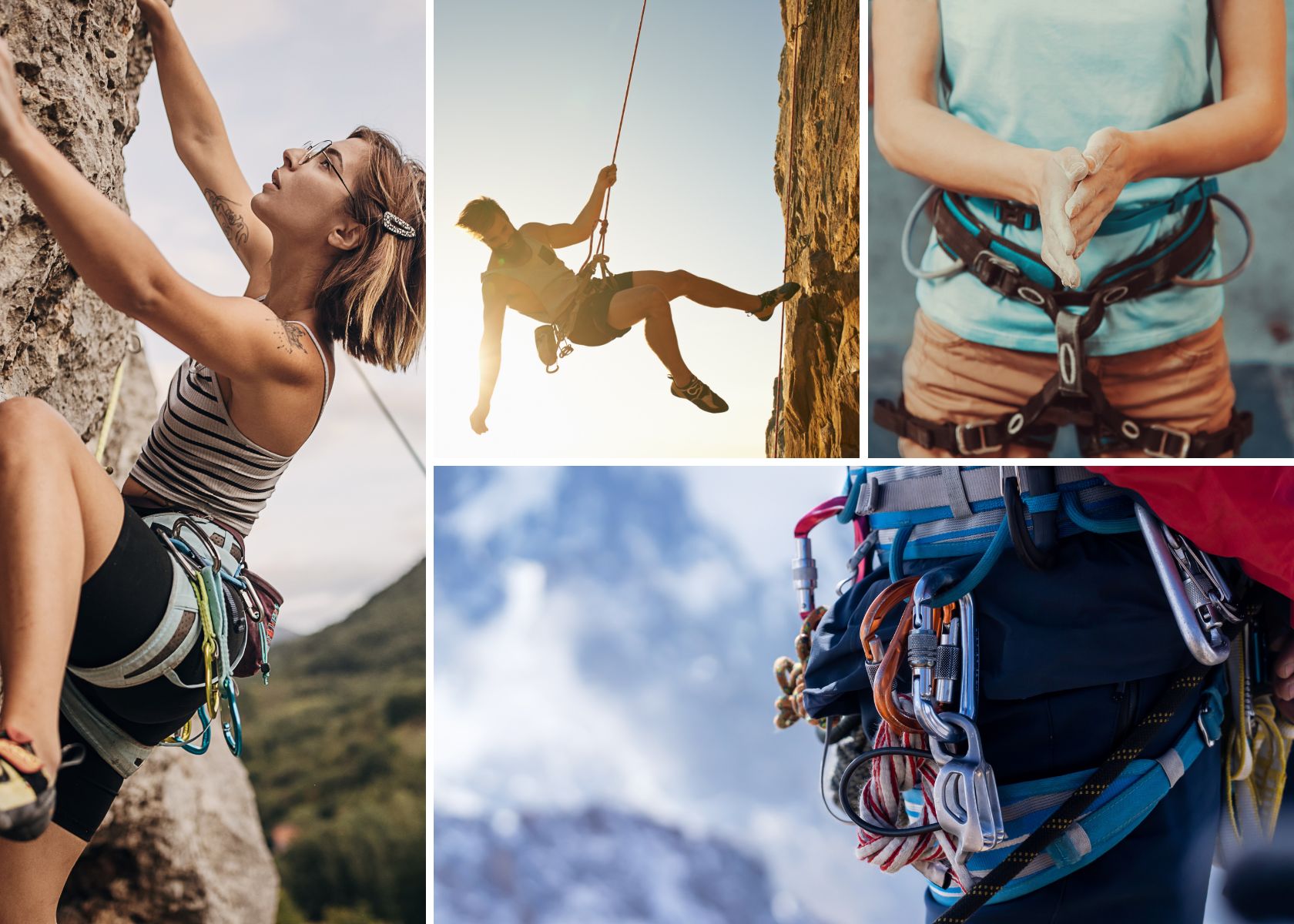If you’ve got a head for heights and want to take your climbing to the next level, you’ll need to invest in the right gear. Here we take an in-depth look into one of the most important pieces of equipment for any climber: the harness. Designed to catch you when you fall and hold you safely against the cliff when needed, in this guide, we’ll take you through the parts of the harness, the different harnesses available and how to find the right fit.
The Parts of a Harness
A climbing harness is made up of several key parts, each serving a specific function for safety, comfort, and gear organisation. Here’s a breakdown of the main components:
Waist Belt
- The primary part of the harness, providing both safety and comfort.
- Offers support when leaning back on descents.
- Made from various materials and designed for different fits and weights.
- Features a buckle, usually off-centre at the front, for rope tie-in.
- Should fit securely - tight enough for support but not so tight it causes chafing or pinching.
- Most waist belts have adjustable buckles for a personalised fit.
- Recent improvements in construction make it easier to find a comfortable waist belt.
Leg Loops
- Attach to the waist belt, with the belay loop at the front and elastic straps at the back.
- Often padded for extra comfort during hanging or resting.
- Usually adjustable to accommodate different clothing layers and ensure a snug fit.
Buckles
- Located on various parts of the harness for size and fit adjustments.
- More buckles add versatility, allowing for different clothing thicknesses.
- Typically made from carbon steel or aluminium for strength without excess weight.
- Most harnesses use auto-locking buckles for quick, easy adjustments, even with gloves.
- Double-backed buckles are still available for those who prefer manual security.
Gear Loops
- Used to attach climbing gear, made from tough plastic or webbing.
- Positioned at intervals around the waist belt for easy clipping and unclipping.
- Not designed to be load-bearing - never use them for belaying.
- Number of loops varies: sports harnesses have fewer to reduce bulk; trad harnesses have more for longer routes.
Haul Loop
- A small loop at the back of the waist belt.
- Used for trailing a second rope or carrying lightweight gear like a chalk bag.
- Not load-bearing and shouldn’t be used as an attachment point.
Belay Loop
- A strong, vertical loop of nylon webbing connecting the waist belt and leg loops.
- The strongest part of the harness, designed to bear full loads during falls or rappelling.
- Ensures correct orientation of carabiner and belay plate for smooth operation.
- All belay loops are load-tested for safety.
Tie-In Points
- Two loops connected to the belay loop for attaching your rope.
- Ropes are threaded through both points using a figure-eight or bowline knot.
- This setup independently attaches the waist belt and leg loops to the rope, improving safety and load distribution.
Rise/Elastic Straps
- Connect the rear of the leg loops.
- Adjustable to alter harness fit.
- Often detachable, allowing leg loops to be removed while staying tied in at the waist - useful for layering or toilet breaks.
Ice Clipper Slots
- Specialised slots for holding ice clipper carabiners.
- Useful for winter climbing, providing easy access to ice screws.

Which Harness is Right for You?
Climbing harnesses come in a variety of designs, each tailored to specific climbing styles and needs. Your choice will depend on your experience and the type of climbing you plan to pursue.
Trad Harness
Trad (traditional) harnesses are built for climbers who need to carry a large rack of gear.
- Typically feature at least four gear loops - some have even more - to accommodate cams, nuts, and other protection.
- Most models include adjustable leg loops for a better fit and comfort on long routes.
- A rear haul loop is common, allowing you to trail a second rope or haul line.
- Extra padding is often added for comfort during hanging belays or multi-pitch climbs.
Sport Harness
Sport harnesses are designed to be as light and streamlined as possible.
- Focus on minimal hardware, as sport climbing requires less gear.
- Usually feature two gear loops, just enough for quickdraws and essentials.
- Constructed from light, breathable mesh-based foams to reduce weight and increase comfort.
- Fixed leg loops are standard, minimising bulk and simplifying the design.
All-Round Harness
All-round harnesses are versatile and suitable for a range of climbing activities, from gym sessions to outdoor routes.
- Made from breathable foams and are generally midweight for comfort and durability.
- Come with four gear loops for carrying a moderate amount of gear.
- Feature adjustable waist belts and leg loops to optimise fit for different body types and clothing layers.
- Some models include ice clipper slots for added versatility in mixed or ice climbing.
Alpine Harness
Alpine harnesses prioritise weight savings and packability for mountaineering and ski touring.
- Constructed from simple webbing, making them very light and easy to pack.
- Designed to be worn over full mountaineering clothing.
- Feature clip buckle systems on the leg loops and a drop seat buckle for easy on/off over boots and crampons.
- Best for mountain and ski tours, but not ideal for technical rock or alpine climbing where more support and gear loops are needed.
Winter Harness
Winter harnesses are built to withstand cold, wet conditions.
- Use closed-cell foam that resists water absorption and won’t freeze, unlike open-cell foam in standard harnesses.
- The foam is more robust and substantial for durability in harsh conditions.
- Less breathable, so not ideal for summer use.
- A wise investment if you plan to climb extensively in winter.
Women's Harnesses
Women’s harnesses are designed to better fit the female body.
- Feature a smaller waist-to-leg loop ratio and a longer rise (distance between waist and leg loops) for improved comfort and fit.
- Reduce bulk and chafing for those who find standard harnesses uncomfortable.
- Always prioritise the harness that fits you best, regardless of gender-specific labelling.
Choosing the right harness ensures comfort, safety, and efficiency - whether you’re clipping bolts at the gym, racking up for a trad route, or heading into the mountains for an alpine adventure.
Finding the Right Fit
Getting the fit is important for your safety and comfort, which is why we recommend coming in-store to get some expert advice. It’s also a great opportunity to try a few different makes and models to see which suits you best. Below we share the things to look out for when having your harness fitted:
- The waist belt should lie on top of the hip bones and should not be able to be dragged down over your hips
- When the waist belt is fastened, there should still be around three inches of webbing left from the buckle
- The harness should not hamper your breathing
- The leg loops should be secure but not restrictive as you’ll need full movement of your legs when climbing
- You should also think about what you’ll be wearing when climbing. For example, if you’re mainly into summer cragging or indoor climbing, you’ll probably just wear a t-shirt, whereas winter climbing enthusiasts will need to layer up. For those who do a bit of everything, try and find a harness with sufficient adjustment to work in different scenarios
- Try hanging in-store if you have the chance because the true test of comfort and fit comes when the harness has to take your weight
Climbing Harness FAQs
There are three main types: sport/indoor harnesses (lightweight, minimal gear loops), trad harnesses (more gear loops, extra padding for comfort), and alpine/mountaineering harnesses (adjustable, lightweight, often with ice clipper slots). Choose based on your climbing style and the gear you’ll need to carry.
A harness should fit snugly around your waist, above your hip bones, without pinching or restricting movement. Leg loops should be comfortable, allowing two fingers to fit between the loop and your thigh. Adjustable leg loops offer flexibility for layering in different conditions.
Beginners should prioritise comfort, ease of adjustment, and a simple design. Look for padded waist and leg loops, adjustable straps, and a secure, easy-to-use buckle system. All-around harnesses are ideal for learning and versatile enough for indoor and outdoor use.
No, harnesses are designed for specific activities. Sport harnesses are lightweight for gym or sport routes, trad harnesses have more gear loops for carrying protection, and alpine harnesses are built for cold conditions and versatility. Always match your harness to your climbing discipline.
Check for UIAA or CE certification labels on the harness. These indicate the harness has passed international safety tests for climbing equipment, ensuring reliable performance and protection during use.
Related Articles

Let us know you agree to cookies
We use marketing, analytical and functional cookies as well as similar technologies to give you the best experience. Third parties, including social media platforms, often place tracking cookies on our site to show you personalised adverts outside of our website.
We store your cookie preferences for two years and you can edit your preferences via ‘manage cookies’ or through the cookie policy at the bottom of every page. For more information, please see our cookie policy.





